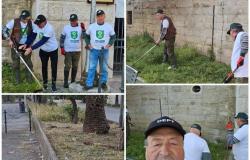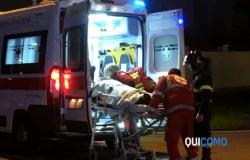Italy is the third European country in terms of availability of water resources, but national networks lose 40% of water. In Sicily the percentage rises to 50% and the island remains dependent on water from other regions for its supply. In the year of drought and the beginning of the desertification process, Sicily still has trickling water networks that could be repaired or replaced with funds from the Development and Cohesion Plan. Confindustria highlighted this through the study “From the water emergency to water efficiency”. The industrial world has also raised the alarm about the inefficiency of water services. Recognizing the difficulty of keeping water in Italian pipes. Confindustria has asked for a sustainable management model, starting from deficits. Like that of Sicily, a region in which the governor Renato Schifani spoke of a “very serious situation” referring to the lack of water.
Sicily also depends on water from other regions
Sicily is a region that, unlike others, receives water from nearby territories and does not give it away. The island therefore has a water dependence and within the Confindustria report it is estimated at 0.2 percent. A very low rate, but one to take into account in the internal management of resources. In Italy the most significant water exchanges, in terms of volume, still occur in the South, but the regions most dependent on the arrival of water from other territories are Puglia (water dependence index of 79%) and Campania ( 26.5%). In the North, however, Veneto receives the most water from other regions (2.5%) and in the Center it is Umbria (2.2%).
Confindustria also places emphasis on sieve networks
Like Confagricoltura in its Green White Paper, Confindustria also placed emphasis in its report “From the water emergency to water efficiency” on network losses. The water networks in all Italian cities are aging and with this process they are deteriorating, leading to the dispersion of water. In Europe, Italy has among the highest rates of dispersion, although improving compared to the past (equal to 42%). At a national level, Sicily records one of the worst rates of water dispersion, worsening the drought problem. The island records losses of 50%, but there are even worse peaks. At the foot of Etna, for example, you get to lose 75% with pipes so old and worn that they resemble tree branches. Total water losses are highest in Basilicata (56.3%), Sardinia (55.6%), Lazio (52.9%). These are all territories, together with Sicily, already subject to high water stress and drought.
The PSC to save water in Sicily and reduce drought
To improve the water networks and therefore equip themselves with an efficient system, Italy and Sicily can aim for economic support from the Pnrr and the Development and Cohesion Plans. Today Sicily and Campania share, for example, a plan to invest where it is necessary. This is the “Water Infrastructure” intervention line financed with the Development and Cohesion Plan (PSC) 2021 – 2027 for 275 million euros. These are funds that can be spent on the maintenance of existing networks, for the creation of more sustainable and resilient infrastructures and for interventions to combat climate change both in the city and in external areas. Among these 275 million, 20 million would be allocated for the completion of unfinished dams.
Italy is the third country for water consumption in Europe
Citing Ispra data, Confindustria recalls that an annual average supply of around 134 billion cubic meters of water has been calculated for Italy, which places the country third in Europe for availability of water resources. Where’s the bad news? “When we evaluate this availability per square kilometre, with 400 thousand square meters per square kilometre, we exceed the European average – writes Confindustria – while in terms of per capita availability, due to the high population density, we are slightly below the average”. According to Ispra data, in recent decades in Italy there has been a progressive decrease in the average annual quantity of water. Specifically, in the period between 1921 and 1950, the average was 166 billion square meters per year, while from 1991 to 2020 it dropped to 134 billion square meters, a decline of 20%. Confindustria has estimated that by 2100 water availability in Italy will be reduced by between 10% and 40%, citing data from the international agency IPCC.
Maxi investment like for the Strait Bridge
The typically national problem is also that of water withdrawal. A lot of water is used, more than in the rest of Europe. “The almost 40 billion cubic meters of water withdrawal in Italy are significantly higher than Spain (second in terms of withdrawals with just over 30 billion, or France (almost 27 billion) and Germany (less than 20 billion). For the whole In Italy, the Def (economic and financial document) 2023 estimates the investment requirement in the water sector at 12 billion euros. For the interventions necessary to reduce losses in the networks, 1.17 billion euros are needed, for the financial coverage of the works water resources financed 150 million euros. The total is equal to 13.320 billion euros. We think that 11.6 were estimated for the construction of the Bridge over the Strait.
President Schifani: “In Sicily the situation is serious”
“The regional government is ready to request a national state of emergency for the water crisis in Sicily. A provision that aims above all to guarantee the supply of drinking water to citizens, that for the agricultural and livestock sector, and to allow companies to continue working and carry out construction sites on the island”. The Region announced this in the last few hours, highlighting the institutional mobilization to provide a solution to the lack of water that is affecting Sicily. “The situation is serious – declared the President of the Schifani Region – and the regional government is doing everything possible to deal with the emergency by involving all the competent branches of the administration and now asking for the support of the State“. Schifani wants to obtain more money from the national government, despite having the funds from the “Water Infrastructure” intervention line at his disposal. “In this way we will have not only the economic resources necessary for the most urgent interventions, but also the tool to speed up procedures and support the agricultural and livestock sector. In the meantime, we have already activated the most urgent interventions in the short and medium term.”
from FocusSicily





